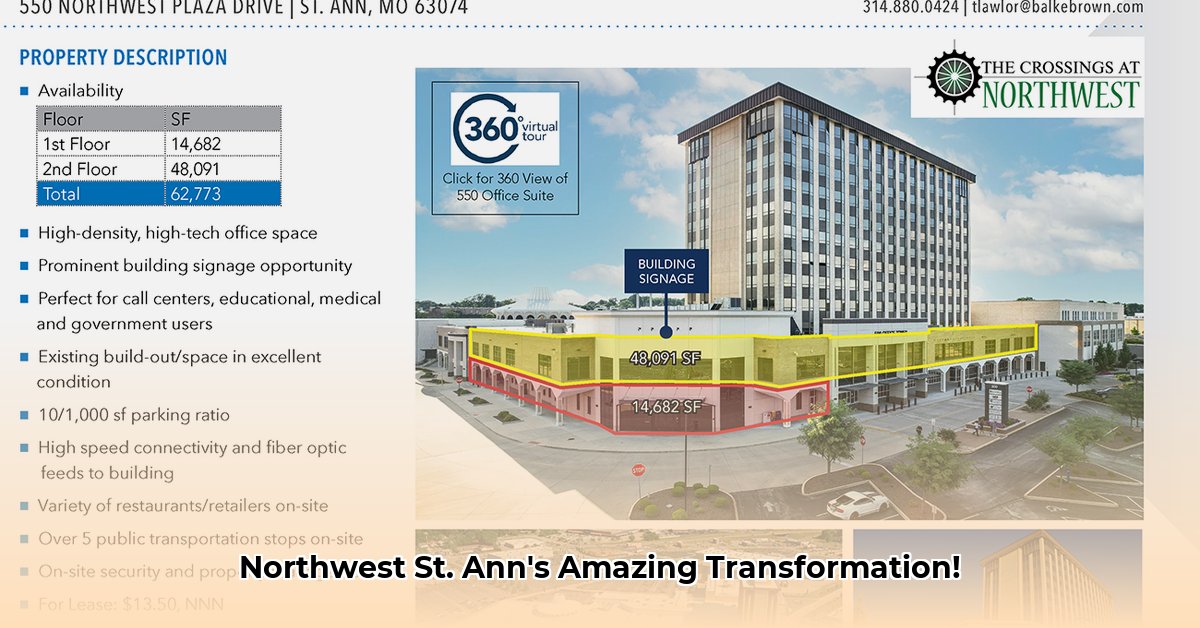
From Failing Mall to Thriving Community: A Case Study in Mixed-Use Redevelopment
The Crossings at Northwest St. Ann, Missouri, stands as a compelling example of successful large-scale urban redevelopment. What was once Northwest Plaza, a sprawling but struggling shopping mall, has been transformed into a vibrant mixed-use development, boasting a county government center, retail spaces, and residential units. This transformation not only revitalized a blighted area but also offers valuable insights for future projects. How was this dramatic turnaround achieved? Let's delve into the strategic decisions and key challenges overcome.
Overcoming the Challenges of Urban Redevelopment
The initial state of Northwest Plaza presented significant hurdles. High vacancy rates, aging infrastructure (including a leaky roof), and increasing instances of crime created a vicious cycle of decline. A previous attempt at simple renovation failed, ultimately resulting in foreclosure. This underscored the need for a more comprehensive and radical approach. The question became: how could this massive, largely vacant property be repurposed to become a financially viable and community-enhancing asset?
The Mixed-Use Solution
The developers' solution was a strategic shift toward a mixed-use model. This wasn't simply adding a few restaurants; it involved a complete reimagining of the space. A pivotal decision was to secure a county government center as a major tenant. This not only filled a significant portion of the available space but also provided a vital community service, creating a natural draw for other businesses and residents. This smart move effectively addressed several key challenges simultaneously.
Stakeholder Impact: A Quantifiable Success
The redevelopment of The Crossings has demonstrably positive impacts on various stakeholder groups.
| Stakeholder Group | Short-Term Impact (First Year) | Long-Term Impact (3-5 Years) |
|---|---|---|
| Property Owners/Investors | Secured new financing; New tenants signed leases. | Successful mixed-use conversion; Steady income from diverse sources; Improved security. |
| Local Government | Increased business and residential growth; Infrastructure upgrades. | Continued investment in amenities; Lower crime rates; Enhanced public safety. |
| Residents | Easier access to county services; New shops and restaurants. | More housing choices; A higher quality of life in the neighborhood. |
| Businesses (Retailers) | More flexible leases, attracting smaller businesses and entrepreneurs. | The overall success of The Crossings directly impacts business success, offering a vibrant atmosphere. |
Isn't it remarkable how a strategic shift can benefit so many? This holistic approach demonstrates the ripple effect of successful urban revitalization. But exactly how was financial success quantified?
Calculating ROI in Mixed-Use Redevelopment: A Complex Equation
The Crossings project showcases the complexities of calculating return on investment (ROI) in mixed-use developments. Unlike simpler projects, multiple revenue streams (residential rents, commercial leases) require a sophisticated financial model. The basic ROI formula — (Net Profit / Total Investment) * 100 — is still relevant, but "net profit" and "total investment" become far more nuanced.
Key Factors in Mixed-Use ROI Calculation
Revenue Projections: Accurate forecasts for rental income, commercial lease revenue, and any additional revenue streams are crucial. This requires thorough market research and competitive analysis.
Expense Analysis: Operating expenses (taxes, insurance, maintenance) and capital expenditures (major repairs) must be precisely estimated. Contingency planning for unforeseen costs is also important.
Financing Costs: Mortgage interest and loan repayments significantly affect profitability. Understanding the cost of capital is essential.
Time Value of Money: Discounted cash flow analysis (DCF) accounts for the time value of money, providing a more accurate picture of long-term profitability.
Risk Assessment: Sensitivity analysis helps to assess the impact of potential market fluctuations or unforeseen delays.
The Crossings' success demonstrates the importance of each of these factors in achieving a positive and sustainable ROI. The project’s financial success isn’t just about numbers; it’s a testament to thoughtful planning and execution. The integration of a government center created a stable base, mitigating inherent risks associated with other commercial ventures.
Lessons Learned: Adapting for Success
The success of The Crossings at Northwest St. Ann provides several key takeaways for future redevelopment projects:
- Embrace mixed-use strategies. Diversifying income streams mitigates risk and creates a more resilient and vibrant community.
- Address infrastructure issues proactively. Ignoring deferred maintenance can lead to escalating costs and delays.
- Engage with the community. Building community support is vital for any successful redevelopment project.
- Adapt to changing market conditions. A rigid approach is a recipe for failure; flexibility is paramount.
Ultimately, the transformation of The Crossings represents a compelling case study in creative urban planning and redevelopment, demonstrating that with strategic vision and execution, even struggling assets can be reborn as thriving community hubs.